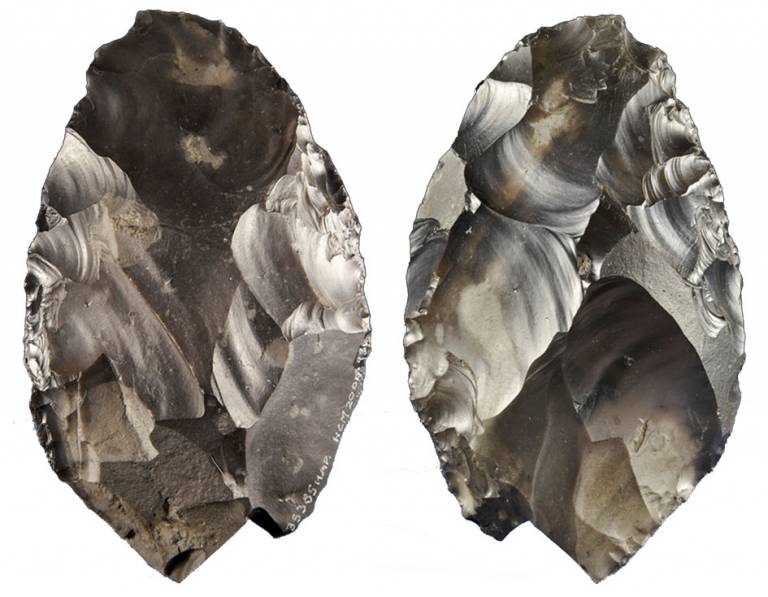Comprehensive study of British stone tools from 301,000 to 328,000 years ago
31 March 2022
First extensive study of flake tools from MIS 9 sites in Britain. No evidence of a rise in flake tool numbers or elaboration towards the Middle Paleolithic. More elaborate flake tools associated with specific hand axe manufacture in MIS 9.

Studies of flake tools in the British Lower Paleolithic are rare owing to lower quantities of flake tools than handaxes and the perception that flake tool technology became more important in the succeeding Middle Paleolithic. In Britain, and Europe more broadly, MIS 9 (328–301 ka) has been characterized as a period of technological transition owing to the presence of early prepared core technology and the status of the period as the final interglacial prior to the onset of the Middle Paleolithic. It has been argued that the period demonstrates an increase in both the numbers and importance of flake tools, possibly showing emerging Middle Paleolithic behaviors. This study presents the results of a technological examination of flake tools in Britain during MIS 9, focusing on 25 sites, including 15 assemblages previously recorded as having higher quantities of flake tools. We use these assemblages to assess whether the flake tools of MIS 9 represent a transition toward the technology of the Middle Paleolithic. We consider factors including collection history, site formation, function, reduction, and cultural groups. We argue that in Britain the archaeological record of MIS 9 does not show an increase in the use of flake tools and demonstrates more continuity than change in relation to earlier periods of the Lower Paleolithic. There is a technological background of ad hoc retouch of simple flake tools with occasional evidence of more invasively retouched scrapers. Furthermore, aside from the introduction of Levallois technology, flake tools change little in the Early Middle Paleolithic. These results are contextualized within the broader evidence from Europe and comparisons to the longer sequences at key sites. We conclude that the major changes in technology began between MIS 13 and MIS 11 and these merely became cemented during MIS 9 and the following Middle Paleolithic.
Flake tools in the European Lower Paleolithic: A case study from MIS 9 Britain
Aaron Rawlinson, Luke Dale, Nick Ashton, David Bridgland, Mark White
 Close
Close

